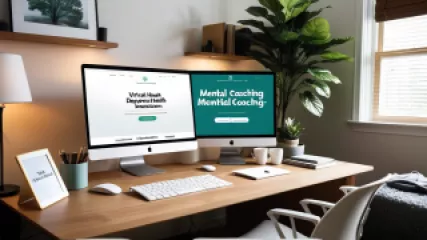Mastering Depression: The Ultimate Guide to Mental Health Coaching Sessions
Mastering Depression: The Ultimate Guide to Mental Health Coaching Sessions
Depression is a complex and challenging mental health condition that affects millions of people worldwide. It can have a profound impact on every aspect of a person's life, from their relationships to their ability to function at work or school. While traditional therapy has been the go-to treatment for managing depression, the rise of virtual support has opened up new avenues for individuals seeking help. In this ultimate guide, we will explore the world of mental health coaching sessions and how they can be a valuable tool in mastering depression.
What is Mental Health Coaching?
Mental health coaching is a specialized form of therapy that focuses on empowering individuals to take control of their mental well-being. Unlike traditional therapy, which often delves into the root causes of depression, mental health coaching sessions are more action-oriented and solution-focused. They aim to provide practical tools and strategies to help individuals manage their symptoms, improve their self-esteem, and build resilience.
A mental health coach works collaboratively with their clients to identify their goals and develop personalized plans to achieve them. They offer guidance, support, and accountability throughout the process, helping individuals develop healthy coping mechanisms and make positive changes in their lives.
The Benefits of Mental Health Coaching Sessions for Depression
Virtual support for depression, such as mental health coaching sessions, offers several advantages over traditional therapy. Here are some of the key benefits:
- Accessibility: Online depression treatment provides access to professional support regardless of geographical location or physical limitations. Individuals living in remote areas or with mobility issues can receive therapy from the comfort of their own homes.
- Convenience: Mental health coaching sessions can be scheduled at a time that is convenient for the individual. This flexibility eliminates the need to travel to a therapist's office, saving both time and effort.
- Privacy: Some individuals may feel more comfortable discussing their struggles in the privacy of their own environment. Virtual sessions allow for increased confidentiality and can reduce the stigma associated with seeking help.
- Cost-effectiveness: Online therapy for managing depression often offers more affordable options compared to in-person therapy. This makes mental health coaching sessions a viable alternative for individuals who may have financial constraints.
How to Get Started with Mental Health Coaching
If you're considering virtual support for depression through mental health coaching sessions, here are some steps to help you get started:
- Research: Take the time to research mental health coaches who specialize in depression and have the necessary qualifications and experience. Look for reviews or testimonials to ensure they have a track record of helping individuals manage their depression effectively.
- Consultation: Reach out to potential mental health coaches and schedule a consultation session. This initial meeting will allow you to assess their approach, ask any questions you may have, and determine if you feel comfortable working with them.
- Goal Setting: Once you've chosen a mental health coach, work together to establish clear and realistic goals. These goals could be related to symptom management, building resilience, improving self-esteem, or any other area you wish to focus on.
- Developing a Plan: Your mental health coach will assist you in developing a tailored plan to achieve your goals. This plan may include various strategies, such as cognitive-behavioral techniques, mindfulness exercises, journaling, or lifestyle changes.
- Regular Sessions: Commit to attending regular mental health coaching sessions. Consistency is key to reaping the benefits of coaching. These sessions will provide an opportunity to discuss your progress, address challenges, and receive ongoing support.
Supplementing Mental Health Coaching with Other Treatments
While mental health coaching sessions can be highly effective in managing depression, they are not intended to replace other forms of treatment. It's important to work with your mental health coach in conjunction with any existing treatments prescribed by your healthcare provider.
Medication, psychotherapy, and lifestyle changes can all play a significant role in managing depression. Mental health coaching can serve as a valuable complement to these treatments, providing additional support and guidance.
The Journey to Mastering Depression
Embarking on the journey of mastering depression is a deeply personal and transformative process. Mental health coaching sessions offer a unique approach that empowers individuals to take an active role in their mental well-being.
Remember, everyone's journey with depression is different, and what works for one person may not work for another. It's important to explore different options and find the combination of treatments and strategies that resonate with you.
By embracing virtual support for depression through mental health coaching sessions, you can gain the tools and knowledge needed to navigate the challenges of depression and build a fulfilling life. Take the first step today towards mastering depression and unlocking your true potential.






